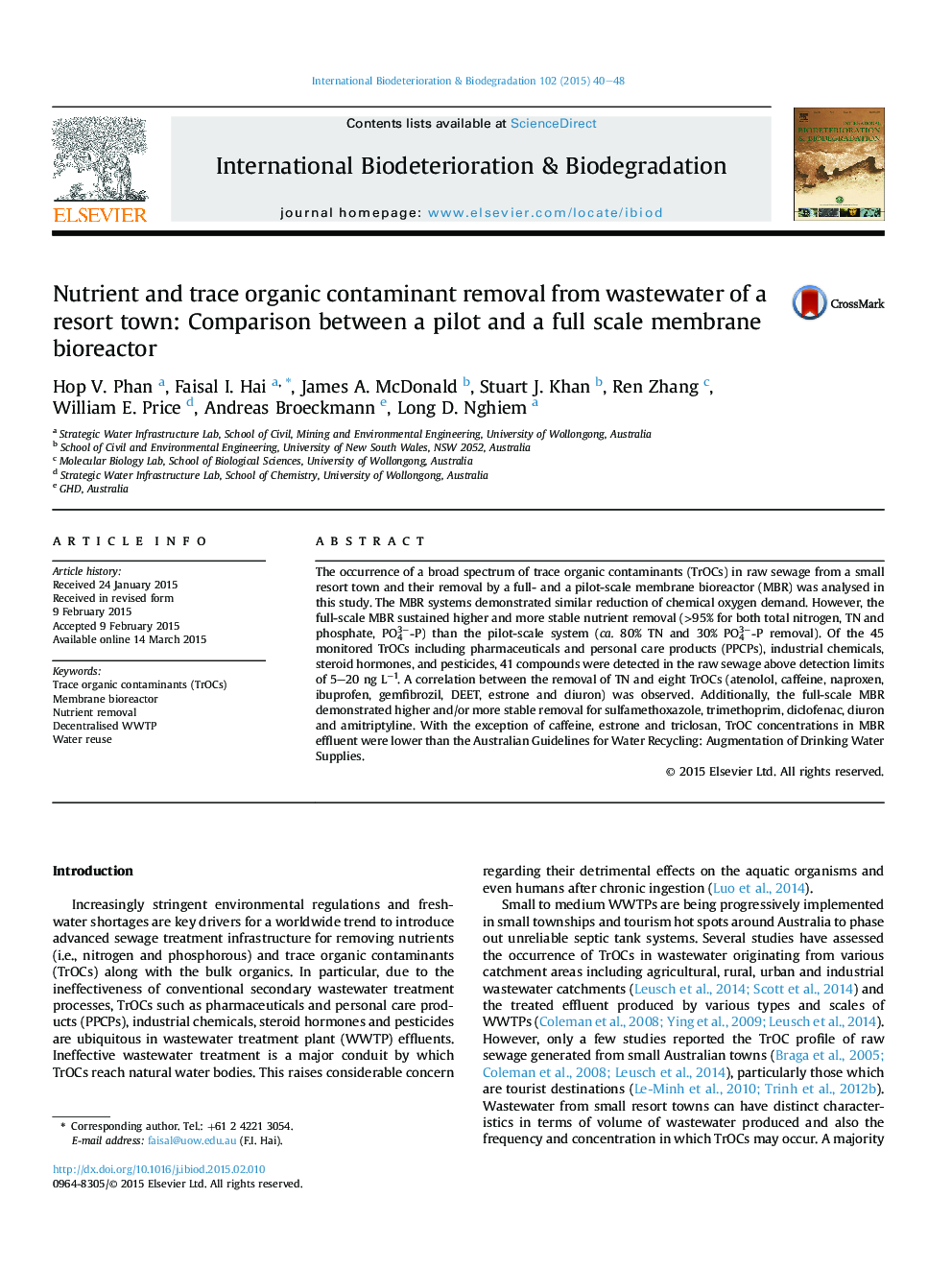| Article ID | Journal | Published Year | Pages | File Type |
|---|---|---|---|---|
| 4364347 | International Biodeterioration & Biodegradation | 2015 | 9 Pages |
•41 TrOCs were identified at levels above the detection limit in raw sewage.•The full-scale MBR showed better nutrient and TrOC removal than the pilot-scale MBR.•Multiple anoxic/aerobic reactors promoted removal of nutrients and some TrOCs.•Removal of eight of the monitored TrOCs closely followed the TN removal profile.•MBR effluent complied with the water reuse guideline for all but three TrOCs.
The occurrence of a broad spectrum of trace organic contaminants (TrOCs) in raw sewage from a small resort town and their removal by a full- and a pilot-scale membrane bioreactor (MBR) was analysed in this study. The MBR systems demonstrated similar reduction of chemical oxygen demand. However, the full-scale MBR sustained higher and more stable nutrient removal (>95% for both total nitrogen, TN and phosphate, PO43−-P) than the pilot-scale system (ca. 80% TN and 30% PO43−-P removal). Of the 45 monitored TrOCs including pharmaceuticals and personal care products (PPCPs), industrial chemicals, steroid hormones, and pesticides, 41 compounds were detected in the raw sewage above detection limits of 5–20 ng L−1. A correlation between the removal of TN and eight TrOCs (atenolol, caffeine, naproxen, ibuprofen, gemfibrozil, DEET, estrone and diuron) was observed. Additionally, the full-scale MBR demonstrated higher and/or more stable removal for sulfamethoxazole, trimethoprim, diclofenac, diuron and amitriptyline. With the exception of caffeine, estrone and triclosan, TrOC concentrations in MBR effluent were lower than the Australian Guidelines for Water Recycling: Augmentation of Drinking Water Supplies.
